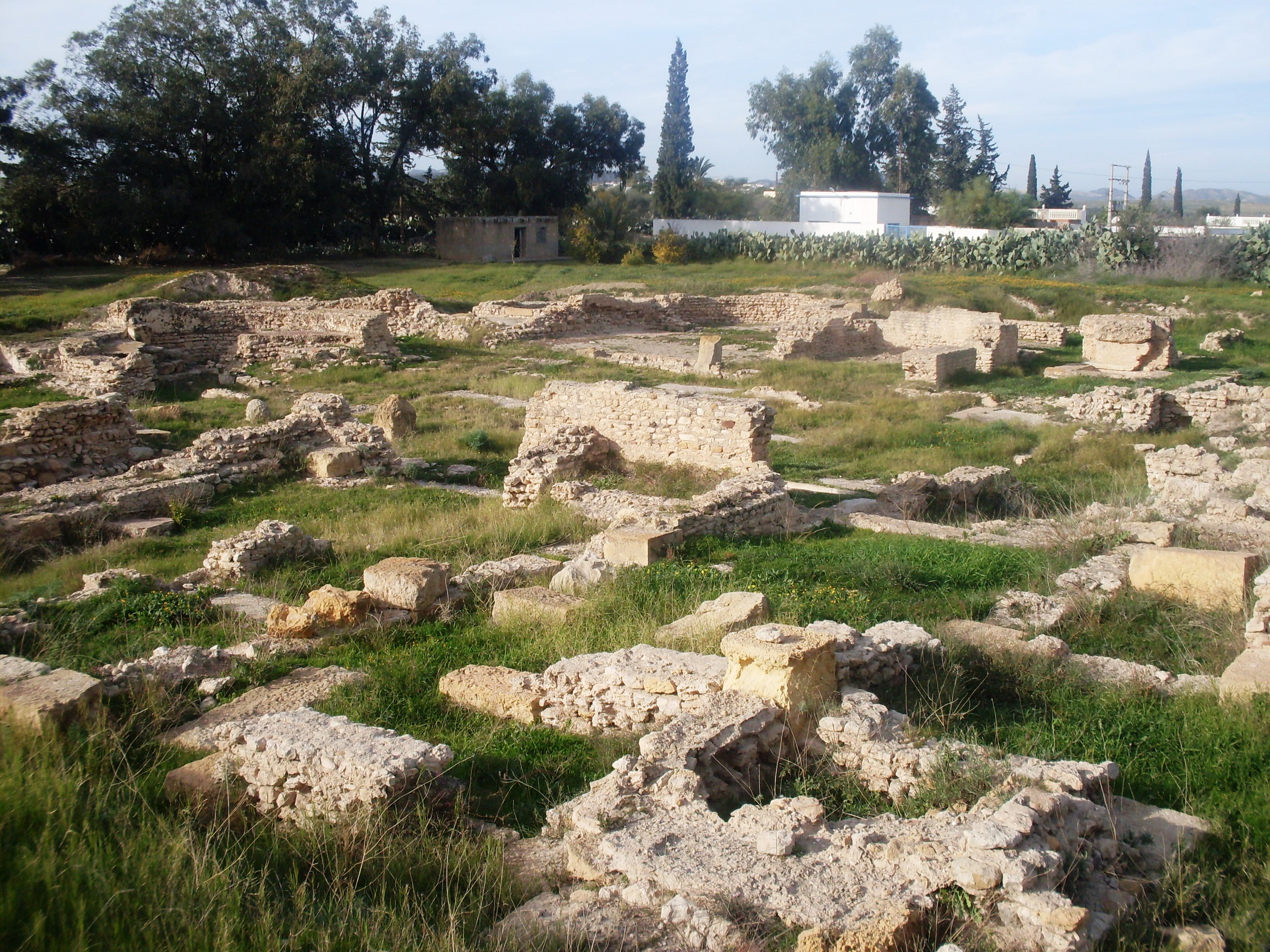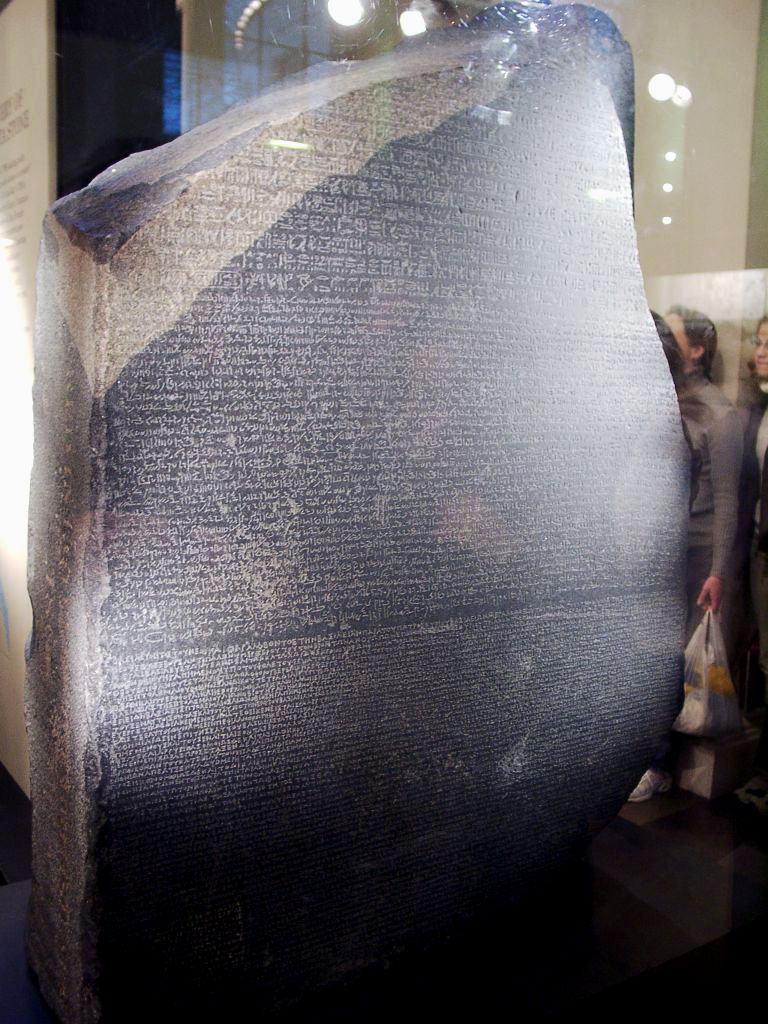|
Uppenna
Uppenna or Upenna is a Tunisian archaeological site located on the site of the present locality of Henchir Chigarnia. The site has delivered a basilica and the remains of a fortress . Location The site is located at Henchir Fraga at 36° 09′ 57″n, 10° 25′ 01″e about 8 km north of Enfidaville, Tunisia. Archaeology A Christian baptistery was cleared by René Cagnat in 1881. The fortress, classified March 25, 1889, was largely degraded thereafter. The discovery of 1881 was identified in 1901, by Paul Gauckler as belonging to a basilica, however, it is not exhaustively searched for budgetary reasons. The church may have been built atop the foundations of a demolished pagan temple. The site was considered important by the excavators of the campaigns in 1904–1905, and focusing on this building allowed the discovery of about forty mosaics, the main one is the mosaic of martyrs which led to a major controversy between Gauckler and Dr. Louis Carton, recovering a conflict b ... [...More Info...] [...Related Items...] OR: [Wikipedia] [Google] [Baidu] |
Enfidaville
Enfidha (or Dar-el-Bey, ar, دار البي ') is a town in north-eastern Tunisia with a population of approximately 10,000. It is visited by tourists on their way to Takrouna. Enfidha is located at around . It lies on the railway between Tunis and Sousse, approximately 45 km northeast of Sousse and a few kilometres inland from the Gulf of Hammamet. The nearby Enfidha – Hammamet International Airport opened in 2009, serving charter flights from several European countries. History Ancient History Nearby Henchir Chigarnia is an Archaeological site and former civitas of the Roman Province of Africa Proconularis. About 8 km north of Enfidaville is another Roman site Henchir Fraga, which is the ancient town of Uppenna, where ruins include a large fortress and of a church in which were found mosaics with epitaphs of various bishops and martyrs. The bishopric of Uppenna has been brought into use as a Roman Catholic titular see since 1967. Early Modern History The En ... [...More Info...] [...Related Items...] OR: [Wikipedia] [Google] [Baidu] |
Sergio Obeso Rivera
Sergio Obeso Rivera (; 31 October 1931 – 11 August 2019) was a Mexican prelate of the Catholic Church. He was Archbishop of Xalapa from 1979 to 2007 after serving as Bishop of Papantla from 1971 to 1974 and then as coadjutor in Xalapa from 1974 to 1979. Pope Francis created him a cardinal on 28 June 2018. Biography Sergio Obeso Rivera was born in Xalapa, Mexico on 31 October 1931. His father was a native of Asturias, Spain, and his mother was from Las Vigas de Ramírez, where he was raised. He entered the seminary in Xalapa on 23 January 1944 and was ordained in Rome on 31 October 1954 and while earning his doctorate in theology at the Pontifical Gregorian University. Until 1971 he held various positions at the Xalapa seminary, including prefect of philosophy, spiritual director, and rector. On 30 April 1971, Pope Paul VI appointed him Bishop of Papantla and he was consecrated a bishop on 29 July. On 18 January 1974, Pope Paul appointed him titular archbishop of Uppenna a ... [...More Info...] [...Related Items...] OR: [Wikipedia] [Google] [Baidu] |
Tunisie Uppenna 1
) , image_map = Tunisia location (orthographic projection).svg , map_caption = Location of Tunisia in northern Africa , image_map2 = , capital = Tunis , largest_city = capital , coordinates = , official_languages = Arabic Translation by the University of Bern: "Tunisia is a free State, independent and sovereign; its religion is the Islam, its language is Arabic, and its form is the Republic." , religion = , languages_type = Spoken languages , languages = Minority Dialects : Jerba Berber (Chelha) Matmata Berber Judeo-Tunisian Arabic (UNESCO CR) , languages2_type = Foreign languages , languages2 = , ethnic_groups = * 98% Arab * 2% Other , demonym = Tunisian , government_type = Unitary presidential republic , leader_title1 = President , leader_name1 = Kais Saied , leader_title2 ... [...More Info...] [...Related Items...] OR: [Wikipedia] [Google] [Baidu] |
Martyr
A martyr (, ''mártys'', "witness", or , ''marturia'', stem , ''martyr-'') is someone who suffers persecution and death for advocating, renouncing, or refusing to renounce or advocate, a religious belief or other cause as demanded by an external party. In the martyrdom narrative of the remembering community, this refusal to comply with the presented demands results in the punishment or execution of an actor by an alleged oppressor. Accordingly, the status of the 'martyr' can be considered a posthumous title as a reward for those who are considered worthy of the concept of martyrdom by the living, regardless of any attempts by the deceased to control how they will be remembered in advance. Insofar, the martyr is a relational figure of a society's boundary work that is produced by collective memory. Originally applied only to those who suffered for their religious beliefs, the term has come to be used in connection with people killed for a political cause. Most martyrs are conside ... [...More Info...] [...Related Items...] OR: [Wikipedia] [Google] [Baidu] |
Inscription
Epigraphy () is the study of inscriptions, or epigraphs, as writing; it is the science of identifying graphemes, clarifying their meanings, classifying their uses according to dates and cultural contexts, and drawing conclusions about the writing and the writers. Specifically excluded from epigraphy are the historical significance of an epigraph as a document and the artistic value of a literary composition. A person using the methods of epigraphy is called an ''epigrapher'' or ''epigraphist''. For example, the Behistun inscription is an official document of the Achaemenid Empire engraved on native rock at a location in Iran. Epigraphists are responsible for reconstructing, translating, and dating the trilingual inscription and finding any relevant circumstances. It is the work of historians, however, to determine and interpret the events recorded by the inscription as document. Often, epigraphy and history are competences practised by the same person. Epigraphy is a primar ... [...More Info...] [...Related Items...] OR: [Wikipedia] [Google] [Baidu] |
Vandal
The Vandals were a Germanic people who first inhabited what is now southern Poland. They established Vandal kingdoms on the Iberian Peninsula, Mediterranean islands, and North Africa in the fifth century. The Vandals migrated to the area between the lower Oder and Vistula rivers in the second century BC and settled in Silesia from around 120 BC. They are associated with the Przeworsk culture and were possibly the same people as the Lugii. Expanding into Dacia during the Marcomannic Wars and to Pannonia during the Crisis of the Third Century, the Vandals were confined to Pannonia by the Goths around 330 AD, where they received permission to settle from Constantine the Great. Around 400, raids by the Huns from the east forced many Germanic tribes to migrate west into the territory of the Roman Empire and, fearing that they might be targeted next, the Vandals were also pushed westwards, crossing the Rhine into Gaul along with other tribes in 406. In 409, the Vandals cros ... [...More Info...] [...Related Items...] OR: [Wikipedia] [Google] [Baidu] |
Huneric
Huneric, Hunneric or Honeric (died December 23, 484) was King of the (North African) Vandal Kingdom (477–484) and the oldest son of Gaiseric. He abandoned the imperial politics of his father and concentrated mainly on internal affairs. He was married to Eudocia, daughter of western Roman Emperor Valentinian III (419–455) and Licinia Eudoxia. The couple had one child, a son named Hilderic. Huneric was the first Vandal king who used the title ''King of the Vandals and Alans''. Despite adopting this style, and that of the Vandals of maintaining their sea-power and their hold on the islands of the western Mediterranean, Huneric did not have the prestige that his father Gaiseric had enjoyed with other states. Biography Huneric was a son of King Gaiseric, and was sent to Italy as a hostage in 435, when his father made a treaty with the Western emperor Valentinian III. Huneric became king of the Vandals on his father's death on 25 January 477. Like Gaiseric he was an Arian, ... [...More Info...] [...Related Items...] OR: [Wikipedia] [Google] [Baidu] |
Council Of Carthage (484)
The Councils of Carthage were church synods held during the 3rd, 4th, and 5th centuries in the city of Carthage in Africa. The most important of these are described below. Synod of 251 In May 251 a synod, assembled under the presidency of Cyprian to consider the treatment of the Lapsi, excommunicated Felicissimus and five other Novatian bishops (Rigorists), and declared that the lapsi should be dealt with, not with indiscriminate severity, but according to the degree of individual guilt. These decisions were confirmed by a synod of Rome in the autumn of the same year. Other Carthaginian synods concerning the lapsi were held in 252 and 254. Synod of 256 Two synods, in 255 and 256, held under Cyprian, pronounced against the validity of heretical baptism, thus taking direct issue with Stephen I, bishop of Rome, who promptly repudiated them. A third synod in September 256, possibly following the repudiation, unanimously reaffirmed the position of the other two. Stephen's claims to au ... [...More Info...] [...Related Items...] OR: [Wikipedia] [Google] [Baidu] |
Bernardo José Bueno Miele
Bernardo is a given name and less frequently an Italian, Portuguese and Spanish surname. Possibly from the Germanic "Bernhard". Given name People * Bernardo the Japanese (died 1557), early Japanese Christian convert and disciple of Saint Francis Xavier * Bernardo Accolti (1465–1536), Italian poet * Bernardo Bellotto (c. 1721/2-1780), Venetian urban landscape painter and printmaker in etching * Bernardo Bertolucci (born 1940), Italian film director and screenwriter * Bernardo Buontalenti (c. 1531–1608), Italian stage designer, architect, theatrical designer, military engineer and artist * Bernardo Clesio (1484–1539), Italian cardinal, bishop, prince, diplomat, humanist and botanist * Bernardo Corradi (born 1976), Italian footballer * Bernardo Daddi (c. 1280–1348), Italian Renaissance painter * Bernardo Domínguez (born 1979), Spanish footballer known as Bernardo * Bernardo Dovizi (1470–1520), Italian cardinal and comedy writer * Bernardo Espinosa (born 1989), Colo ... [...More Info...] [...Related Items...] OR: [Wikipedia] [Google] [Baidu] |
Belgium
Belgium, ; french: Belgique ; german: Belgien officially the Kingdom of Belgium, is a country in Northwestern Europe. The country is bordered by the Netherlands to the north, Germany to the east, Luxembourg to the southeast, France to the southwest, and the North Sea to the northwest. It covers an area of and has a population of more than 11.5 million, making it the 22nd most densely populated country in the world and the 6th most densely populated country in Europe, with a density of . Belgium is part of an area known as the Low Countries, historically a somewhat larger region than the Benelux group of states, as it also included parts of northern France. The capital and largest city is Brussels; other major cities are Antwerp, Ghent, Charleroi, Liège, Bruges, Namur, and Leuven. Belgium is a sovereign state and a federal constitutional monarchy with a parliamentary system. Its institutional organization is complex and is structured on both regional ... [...More Info...] [...Related Items...] OR: [Wikipedia] [Google] [Baidu] |




.jpg)